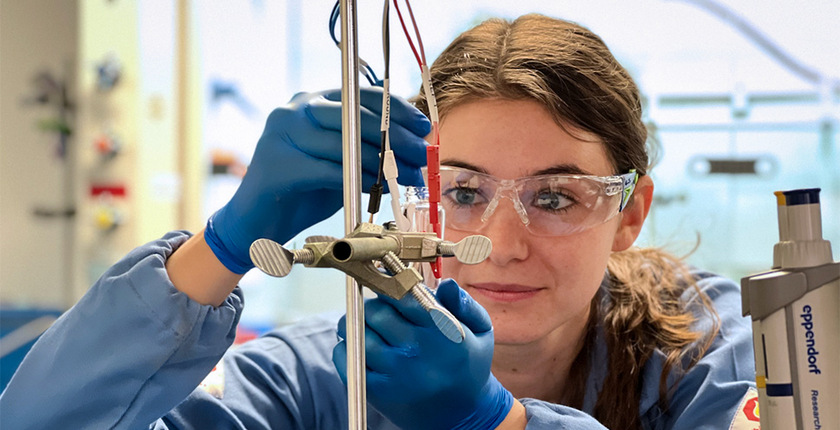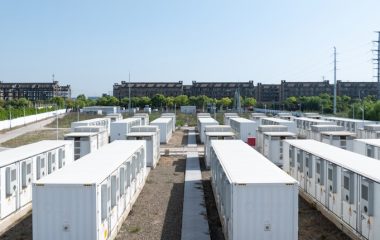
Photo: Northwestern University (courtesy Malapit Lab)
Scientists in Illinois have developed a process to turn organic industrial waste into an energy storage material that could replace metals in some types of batteries. While further research is still needed, the team at Northwestern University hopes it could eventually help store renewable energy on a large scale.
The new process utilizes a waste molecule called triphenylphosphine oxide (TPPO), a by-product in the manufacture of products such as vitamin pills, to create redox flow batteries (RFBs).
RFBs are rechargeable batteries that use a chemical reaction to pump energy back and forth between electrolytes, where their energy is stored. In lithium and other solid-state batteries, on the other hand, energy is stored in electrodes. The market for RFBs is expected to rise by 15% between 2023 and 2030, according to a statement on the university’s website.
TPPO batteries are not fit for cars and phones, but could be a better solution for grids
Although less efficient than other types of batteries and too large for electric cars or smartphones, TPPO-based batteries could offer a better solution for grid-scale electricity storage and balancing, including from wind and solar.
To test the molecule’s resilience, the team conducted charge and discharge experiments. Even after 350 cycles, the battery maintained remarkable health, losing very little capacity.
The new technology would not require invasive metals mining
Moreover, the production of batteries based on TPPO would be more environmentally sustainable as it would not require intensive and invasive mining like lithium or cobalt batteries. Also, waste is not in such short supply as these metals.
Thousands of tons of TPPO are produced each year, but it is rendered useless and must be carefully discarded following production, according to Northwestern University.
Christian Malapit, the lead author of the research, says the discovery demonstrates the potential of transforming waste compounds into valuable resources, offering a sustainable pathway for innovation in battery technology.
“Battery research has traditionally been dominated by engineers and materials scientists. Synthetic chemists can contribute to the field by molecularly engineering an organic waste product into an energy-storing molecule,” he pointed out.









Be the first one to comment on this article.